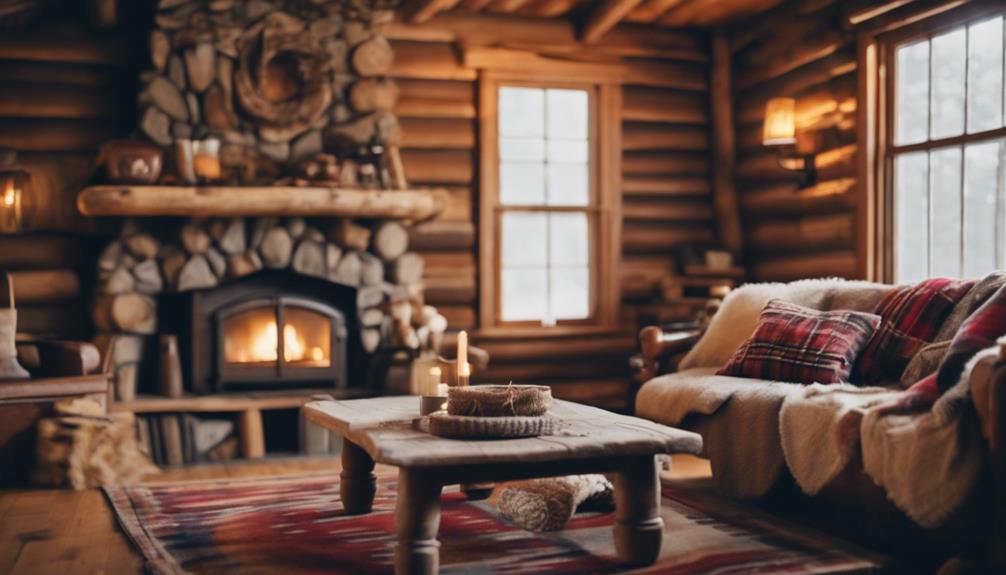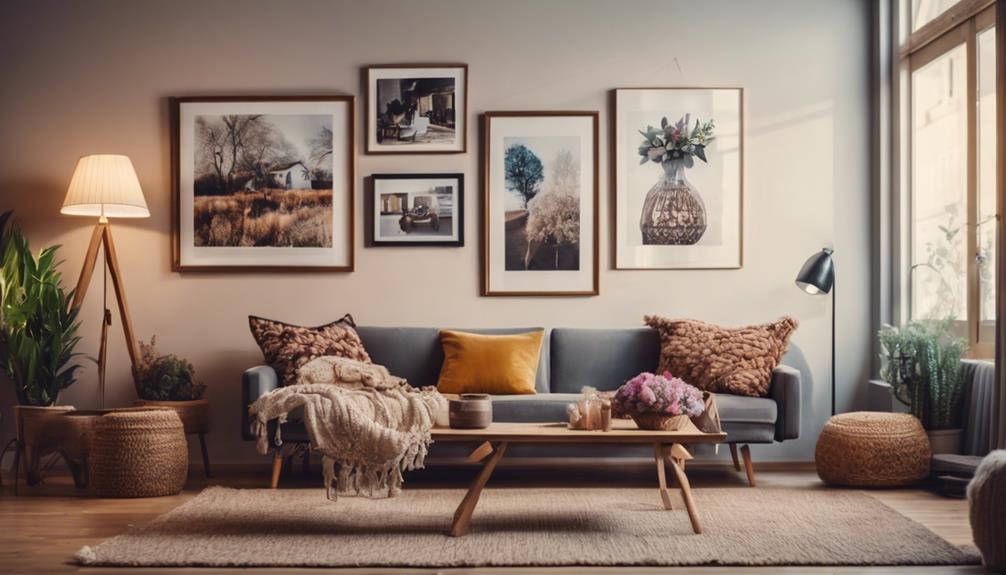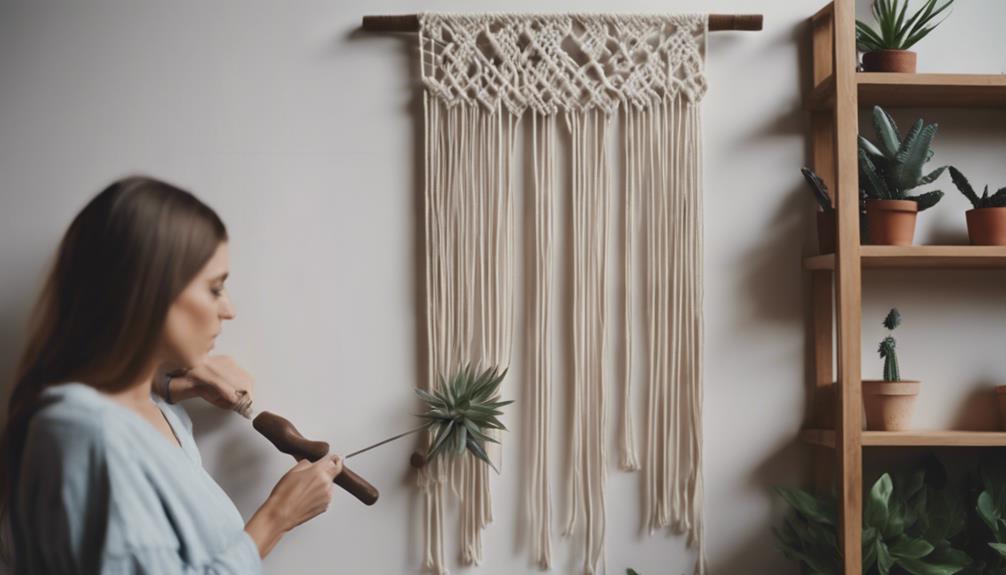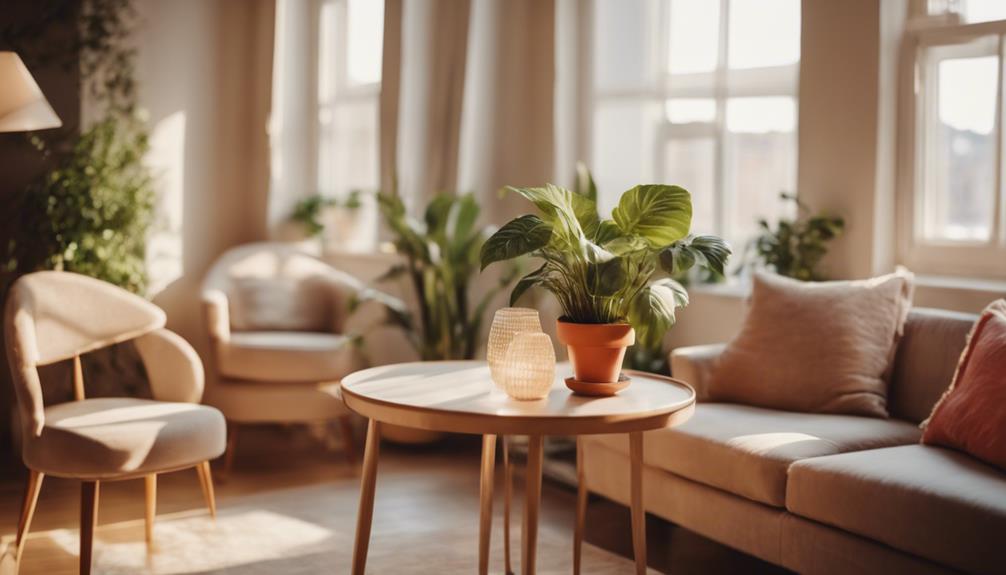Create a cozy cabin by selecting earthy tones and warm grays for a peaceful ambiance. Add pops of color with throw pillows and rugs to liven up the space. Wood accents enhance the rustic appeal. Embrace soft textiles like wool blankets for a cozy feel. Stone fireplaces bring character to the room. Opt for natural wood double-hung windows for energy efficiency. Vintage decor pieces are great conversation starters. Stone fireplaces and wooden dining tables make stunning focal points. These details create a warm and inviting atmosphere. Consider bringing a touch of nature indoors to fully embrace the rustic charm.
Key Takeaways
- Incorporate natural materials like wood and stone for genuine rustic charm.
- Use warm earthy color palettes to create a cozy and inviting atmosphere.
- Add cozy textiles like wool blankets and plush pillows for warmth.
- Create focal points with stone fireplaces or wooden furniture.
- Infuse vintage decor for character and nostalgia in the cabin.
Nature-Inspired Color Palette
Embrace earthy tones like browns, greens, and warm greys to achieve a nature-inspired color palette in your log home decor. By incorporating these warm neutrals and muted colors, you can create a serene atmosphere that reflects the beauty of the outdoors.
To enhance the cozy and inviting atmosphere of your space, consider adding pops of color through accents like throw pillows, rugs, and wall art. These pops of color won't only liven up the neutral palette but also add a touch of vibrancy to your decor.
Natural wood tones play an essential role in enhancing the rustic charm of a log cabin. Mixing these earth tones with the warmth of wood creates a harmonious and cozy ambiance. By choosing colors that mimic nature's hues, such as beige, cream, earth tones, greens, blues, and purples, you can bring the tranquility of the outdoors into your home.
This nature-inspired decor will envelop you in comfort and relaxation, making your log home a true sanctuary.
Cozy Textiles and Focal Points
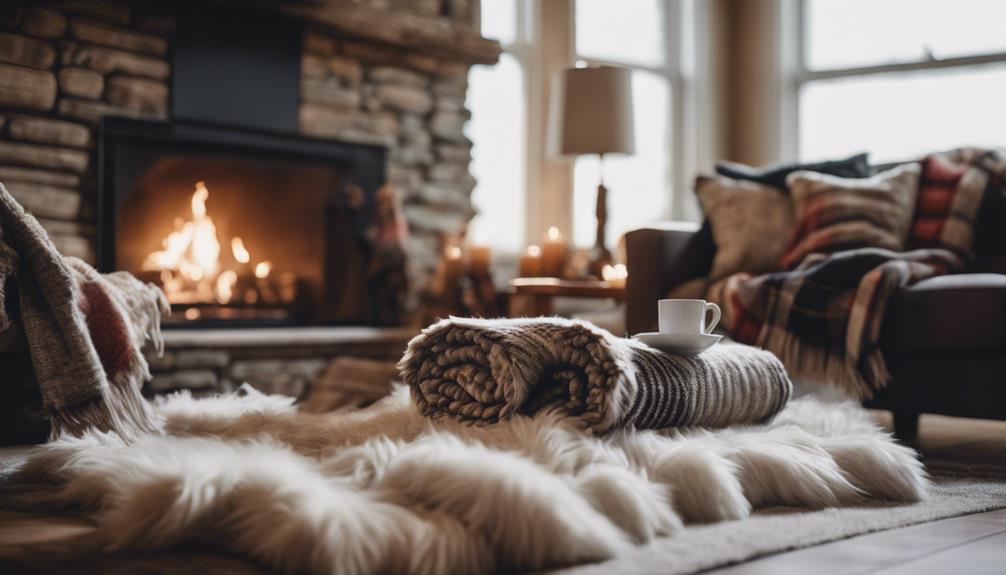
You can elevate the cozy atmosphere in your log home by selecting the right textiles like wool blankets and plush throw pillows.
Consider creating focal points with elements such as a stone fireplace or a wooden dining table to enhance the charm of each room.
Textile Selection Tips
Consider integrating comfortable fabrics like wool or faux fur blankets to add warmth and softness to your log home decor, establishing a welcoming and cozy ambiance. Soft fabrics such as these can help to soften the rugged appearance of logs, making your space feel more inviting.
Area rugs can also play a significant role in enhancing the snug atmosphere of your log cabin while complementing its natural beauty. When choosing fabrics, opt for materials like twill, chenille, and faux leather to guarantee both functionality and elegance in your decor. These selections not only provide warmth but also contribute to the visual allure of the space.
To establish focal points, consider elements like stone fireplaces or wooden dining tables that can act as striking centerpieces in your log home, adding character and charm to the overall design.
Focal Point Ideas
Enhance the coziness of your log home by strategically incorporating focal points that highlight the charm of your space through the use of cozy textiles and eye-catching elements.
Create a warm and inviting ambiance by introducing cozy textiles like wool or faux fur blankets, along with plush throw pillows that offer added comfort.
Make a statement in each room by featuring eye-catching focal points such as a majestic stone fireplace or a rustic wooden dining table, adding character and warmth to the space.
To soften the rugged aesthetics of log walls, consider incorporating area rugs and textured textiles that not only provide visual interest but also enhance the cozy atmosphere.
Elevate the overall design by integrating unique artwork and vintage decor pieces that serve as conversation starters and draw attention.
Cozy Log Cabin
Softening the rugged aesthetics of log walls, cozy log cabins can be transformed into inviting retreats by incorporating a blend of warm textiles and alluring focal points.
To achieve a cozy atmosphere in your log cabin, consider adding new cozy textiles like wool or faux fur blankets, area rugs, and throw pillows. These elements not only provide comfort but also soften the rugged look of the logs. Opt for textures such as twill, chenille, and faux leather to enhance the cozy vibe further.
When designing a space, focal points like a stone fireplace or a wooden dining table can anchor the room and serve as conversation pieces. Embrace wood tones in your choice of wooden furniture to complement the rustic charm of the cabin decor.
Log Cabin Construction Components
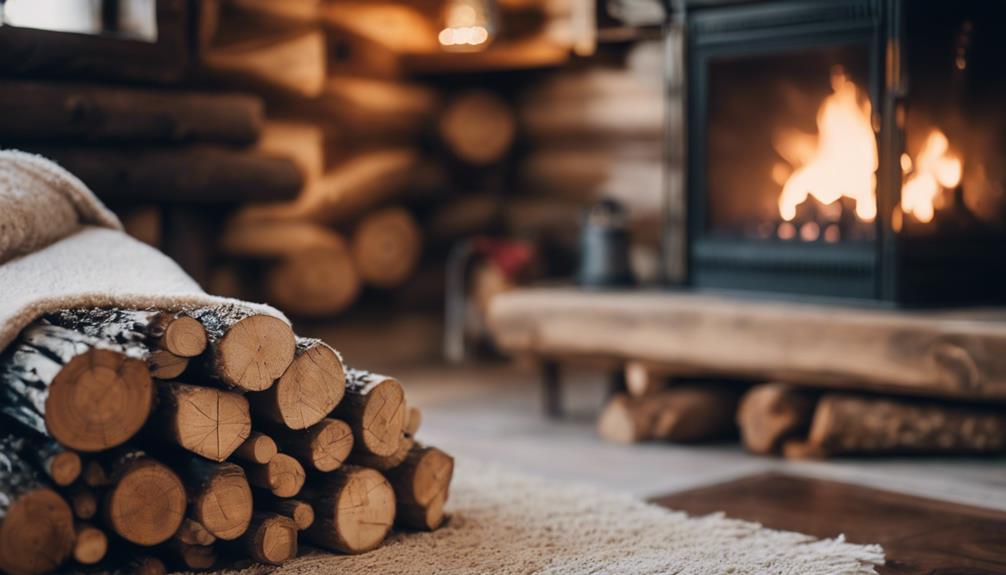
When constructing a log cabin, various essential components like the Logwall System, windows, doors, Second Floor System, and Roof System play pivotal roles in ensuring structural integrity and functionality.
The Logwall System comprises Eastern White Pine logs, insulation, fastening, and caulking, all necessary for the cabin's structural integrity.
Windows in log cabin construction are typically insulated natural wood double-hung windows, designed with specific features for energy efficiency.
As for doors, log cabins feature different types of energy-efficient entry and patio doors to enhance both functionality and aesthetics.
The Second Floor System involves conventional joists, girders, and support structures to create a sturdy upper level in the cabin.
Porch Roof Construction Details
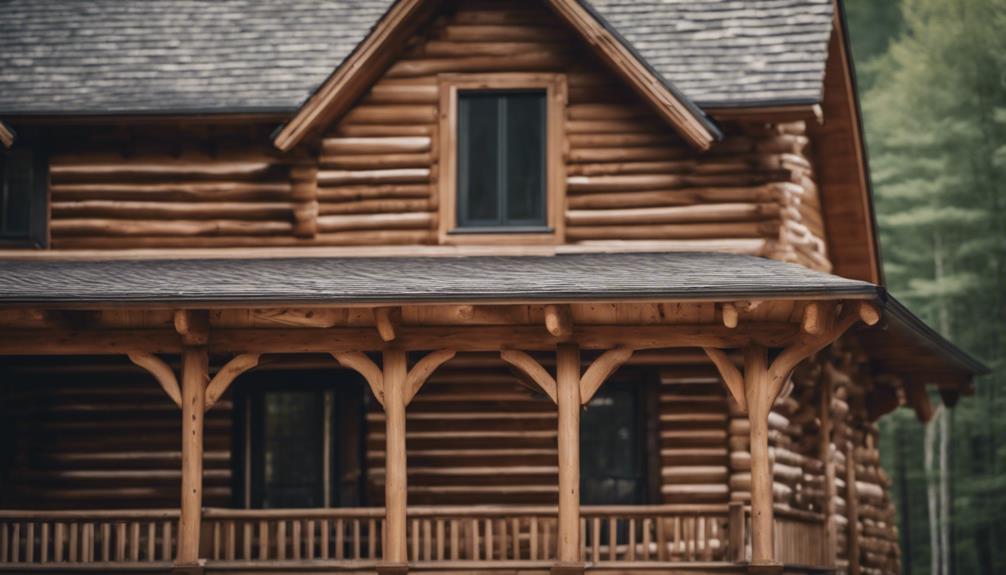
When constructing your log home porch roof, focusing on the roof system components is crucial for durability. Pay attention to details such as porch posts, carry beams, and decking.
It is essential to use log cabin building wrap protection and follow Auto-CAD blueprints for accuracy. Understanding these porch roof details is vital for enhancing both the aesthetic appeal and functionality of your log cabin home.
Roof System Components
How do the porch roof system components work together to guarantee structural integrity and durability in log home decor?
Porch posts, carry beams, rafters, and decking play essential roles in providing both structural support and enhancing the aesthetics of log cabin homes. Additionally, components like Log Cabin Building Wrap Protection are incorporated to fortify the porch roof construction against environmental elements, ensuring longevity.
Porch Posts and Carry Beams: These components form the foundational structure of the porch roof, bearing the weight and providing stability.
Rafters and Decking: Rafters support the roof load, while the decking serves as the surface where you can place furniture or decor items. Together, they create a cohesive look for the porch.
Log Cabin Building Wrap Protection: This protective layer shields the porch roof system from moisture and other damaging factors, preserving the integrity of the structure over time.
Porch Roof Details
Explore the detailed design elements of porch roof construction details in log home decor to understand their key role in maintaining both structural integrity and aesthetic charm.
When decorating a log home, the porch roof construction plays an important role in providing structural support and enhancing the rustic cabin's exterior appeal. Incorporating natural materials like wood beams, rafters, and decking not only adds to the authenticity of log home decor but also ensures a cohesive design theme. Additionally, features such as porch posts and log cabin building wrap protection are essential components of porch roof construction that contribute to durability and weather resistance.
To achieve a harmonious look, log cabin owners often opt for porch roof details that seamlessly blend with the overall design of the home. Auto-CAD blueprints provide precise measurements and instructions for builders to follow, ensuring the proper installation and assembly of porch roof materials. By adhering to specific guidelines during the delivery and construction process, log home enthusiasts can create a charming and functional porch roof that complements the cozy vibes of their rustic abode.
Rustic Decorating Ideas
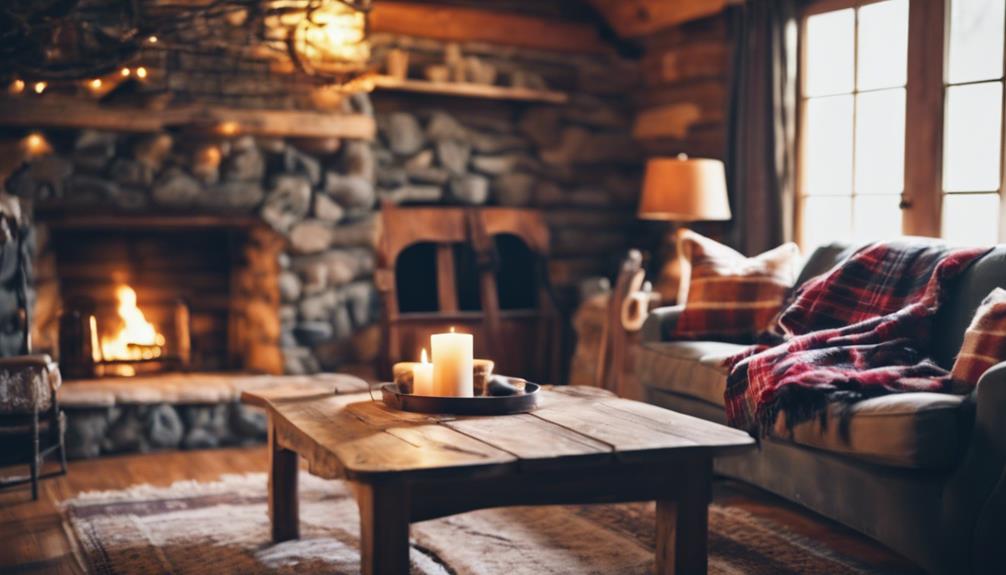
Incorporate natural materials such as wood, stone, and leather to infuse rustic charm into your log home decor. To achieve a cozy cabin vibe, consider the following rustic decorating ideas: Hang a wooden chandelier in the living room to add a touch of warmth and charm. Use stone accents in the kitchen, such as a stone backsplash or a stone kitchen island, to bring in natural elements. Incorporate leather furniture and accents throughout the home to achieve ultimate home comfort. These rustic decorating ideas will help create a cozy and inviting atmosphere in your log home.
- Warm Color Palettes: Opt for earthy tones like browns, greens, and greys to create a rustic aesthetic that emanates warmth throughout your space.
- Texture Variety: Enhance the cabin atmosphere by adding texture with wool blankets, faux fur rugs, and cozy textiles, providing both visual interest and comfort.
- Highlight Natural Elements: Make logs and stone fireplaces the focal points in your log home, emphasizing the beauty of natural elements and adding to the overall rustic decor.
Styling Tips for Log Cabins
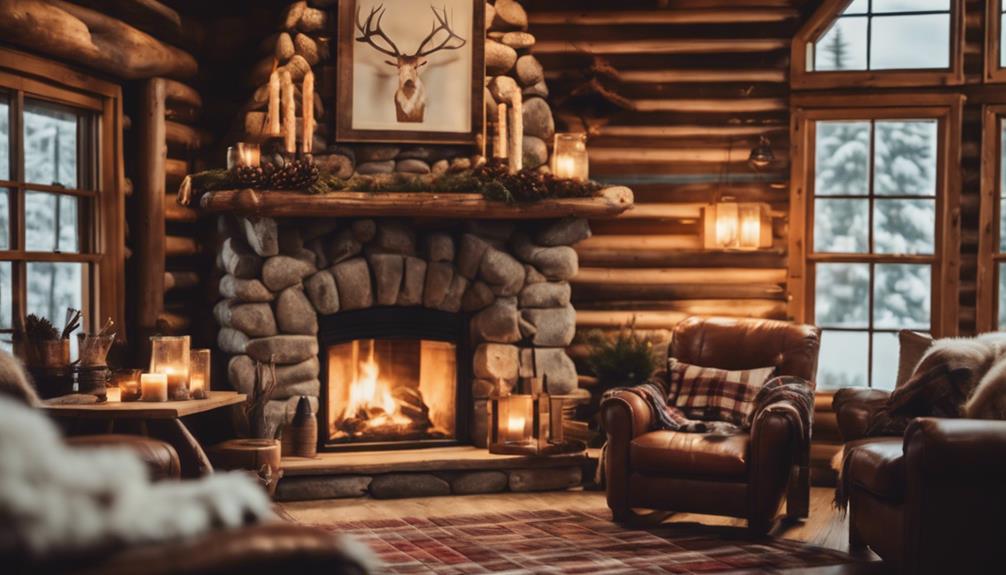
To style your log cabin effectively, focus on incorporating natural materials like wood and stone. Embrace the imperfections and warmth of these elements to create a genuine and cozy cabin atmosphere.
Utilize earthy color palettes and warm neutrals to complement the natural surroundings, enhancing the rustic charm of the space. Integrate rustic elements such as antlers, faux fur accents, and vintage decor to add character and a touch of nostalgia to your log cabin.
Create focal points within the cabin by introducing features like stone fireplaces or statement wooden furniture pieces. These focal points not only elevate the rustic aesthetic but also serve as conversation starters and visual anchors in the room.
Frequently Asked Questions
How to Make a Log Cabin Cozy?
To make a log cabin cozy, incorporate natural materials like wood and stone, use warm color palettes with pops of color, add cozy textiles like wool blankets, create focal points with rustic elements, and keep logs visible.
How Do You Make Rustic Look Elegant?
To make rustic look elegant, you blend natural materials like wood and stone with a sophisticated color palette. Add modern touches and luxurious textures for balance. Focus on quality and detail, creating a refined rustic charm that's breathtakingly beautiful.
How Do I Decorate My Log Home?
Decorate your log home with natural materials like wood and stone for an authentic feel. Embrace warm earthy tones, add rustic textiles for comfort, and highlight the logs' beauty. Choose rustic decor elements like antlers and vintage pieces for charm.
What Interior Design Style Is Cozy?
To create cozy interiors, focus on warm colors, soft textures, and inviting furniture arrangements. Incorporate elements like plush rugs, throw blankets, and comfortable seating. Embrace natural materials like wood, stone, and cotton for a cozy ambiance.
Conclusion
So next time you think log home décor might be too rustic, remember how cozy and inviting it can feel with the right elements in place.
Just imagine coming home to a warm fire crackling in the fireplace, surrounded by soft blankets and natural wood accents.
Embrace the charm of a log cabin and create a space that truly feels like a peaceful retreat in the woods.
